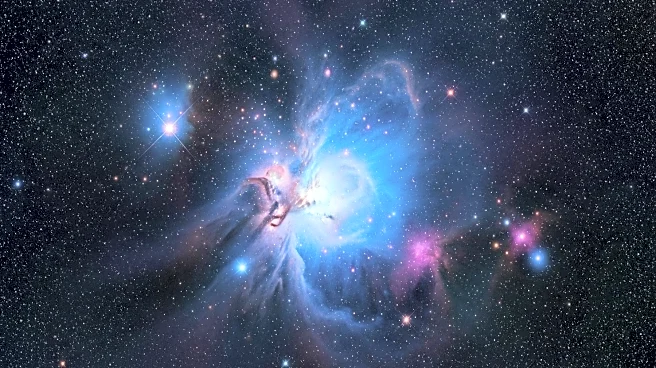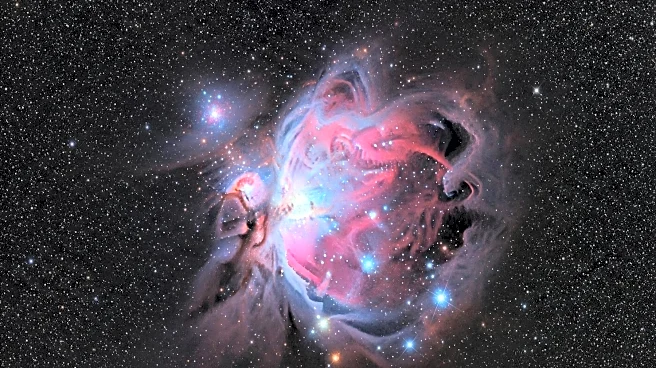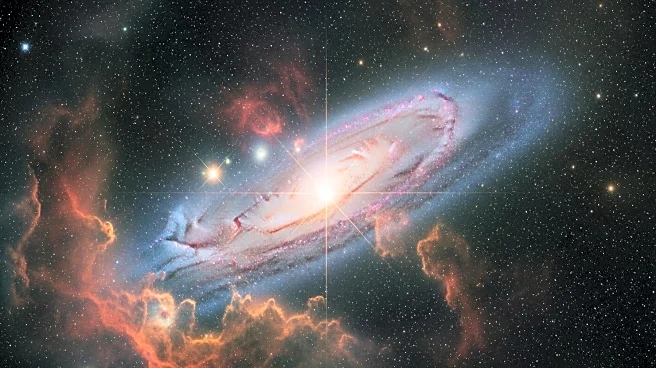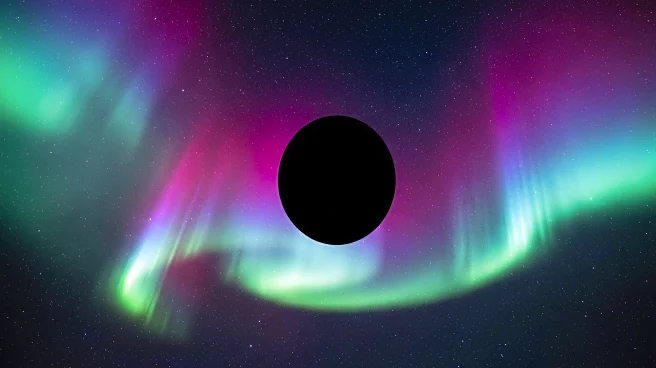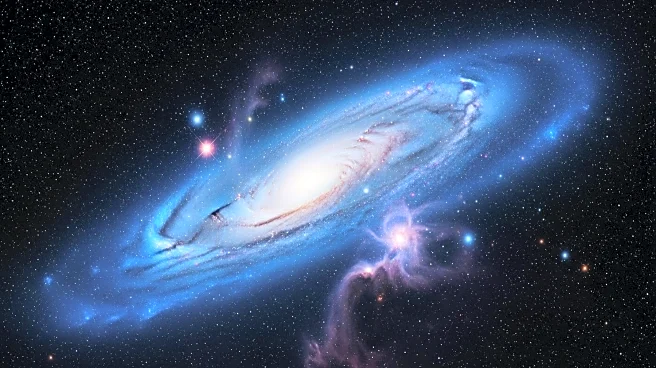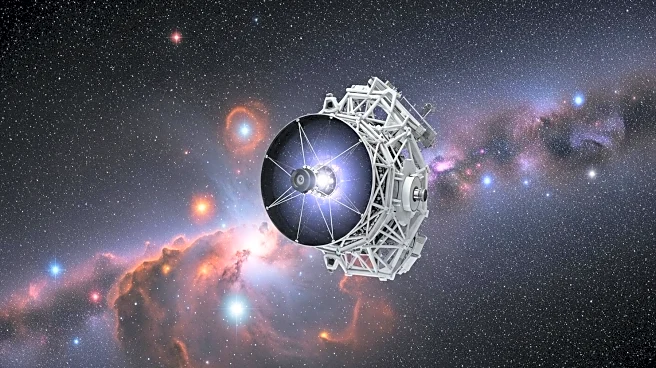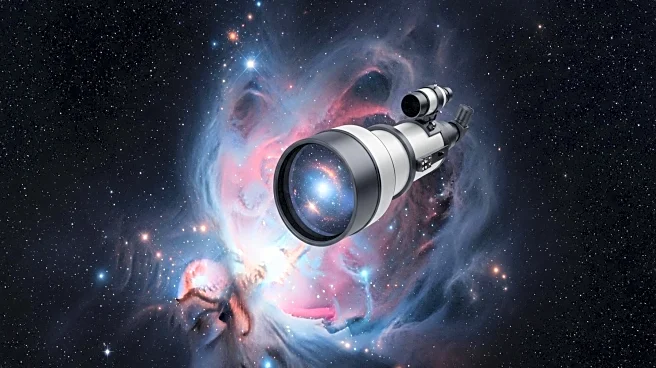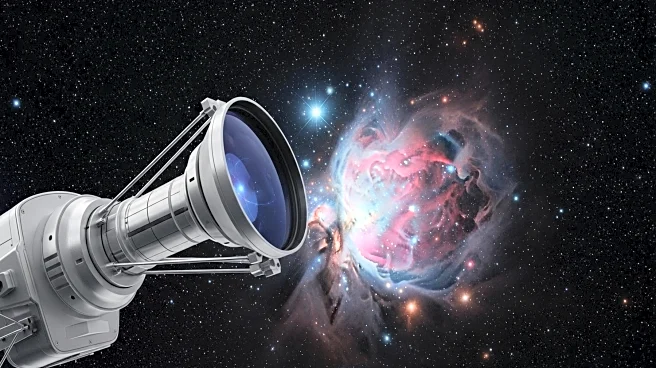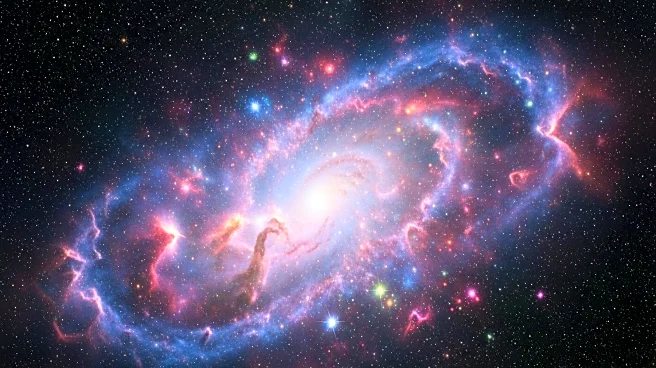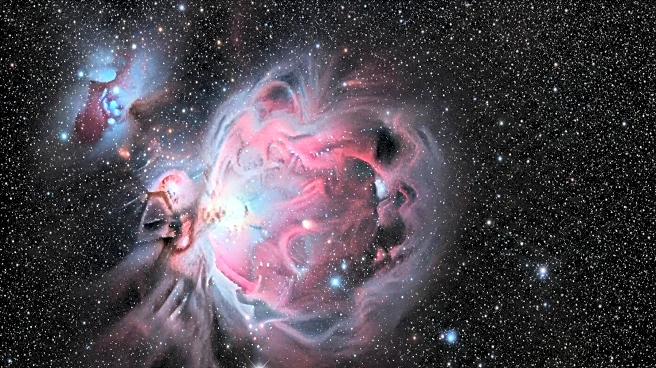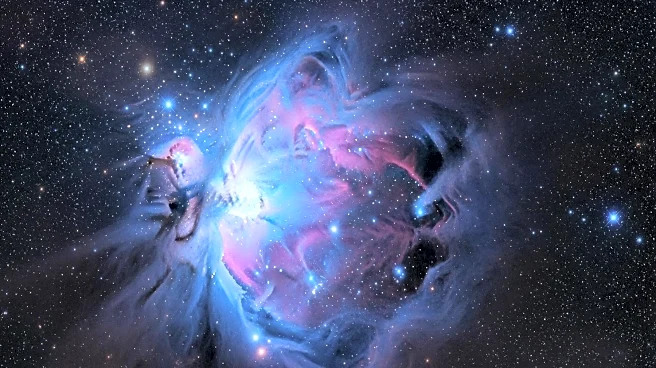What is the story about?
What's Happening?
The James Webb Space Telescope (JWST) has captured a detailed image of Sagittarius B2, the largest star-forming molecular cloud in the Milky Way, located 25,000 light-years from Earth in the constellation Sagittarius. This region, near the galaxy's central black hole, Sagittarius A*, is responsible for a significant portion of the Milky Way's star formation. The JWST used its Near-Infrared Camera (NIRCam) and Mid-Infrared Instrument (MIRI) to observe the cloud, revealing stars shining through orange clouds of gas and dust. The MIRI image highlights the dust clouds illuminated by stars, showing pink and purple hues with dark regions where star formation ingredients are hidden. Despite its advanced capabilities, the JWST cannot penetrate the densest parts of these clouds.
Why It's Important?
The observations of Sagittarius B2 by the JWST are crucial for understanding star formation in the Milky Way. This region's prolific star production, despite having only 10% of the galactic center's gas, challenges existing theories about star formation and galaxy evolution. The data from JWST could provide insights into why Sagittarius B2 is more productive than other regions, potentially reshaping scientific understanding of how galaxies grow. This research could have broader implications for astrophysics, influencing models of galaxy formation and the lifecycle of stars.
What's Next?
Scientists plan to analyze the new data from the JWST to determine the duration of star formation in Sagittarius B2 and identify any events that may have triggered its high activity. This ongoing research aims to uncover the mechanisms behind the cloud's star-forming efficiency, which could lead to new theories about the evolution of galaxies. The findings may also prompt further observations and studies using the JWST and other telescopes to explore similar regions in the universe.
Beyond the Headlines
The study of Sagittarius B2 not only advances scientific knowledge but also highlights the capabilities of the JWST in exploring the universe. The telescope's ability to capture detailed images in different wavelengths allows astronomers to study cosmic phenomena that were previously obscured. This technological advancement opens new avenues for research and discovery, potentially leading to breakthroughs in understanding the universe's structure and history.
AI Generated Content
Do you find this article useful?
